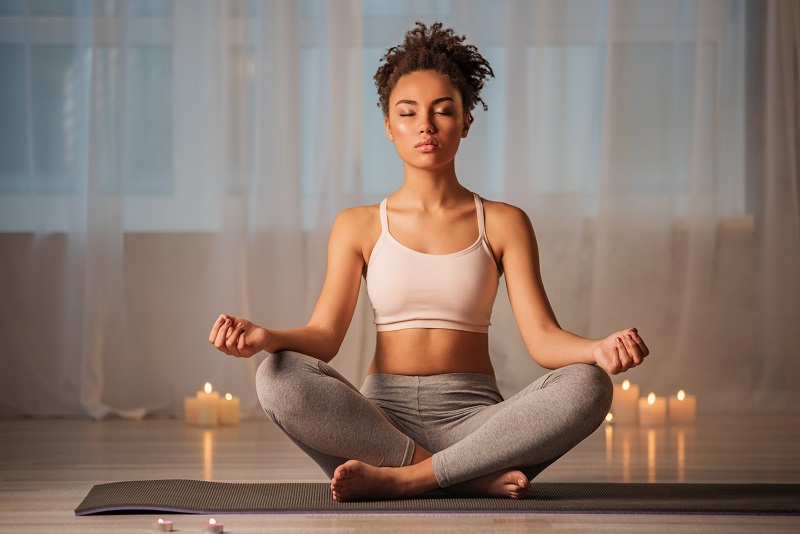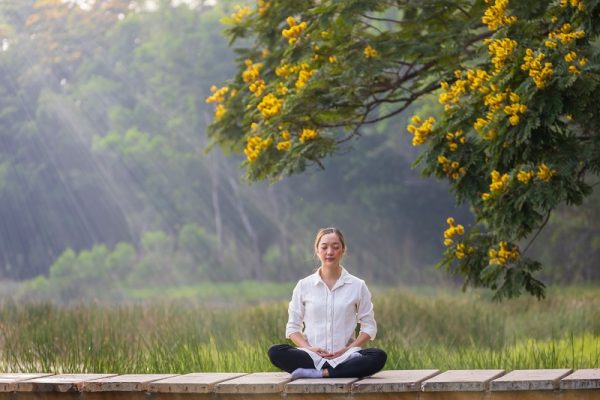Exercise and Fitness
6 Tips for Getting You Started with Meditation Practice
by Mia Barnes
If you’ve never meditated before, all you need to start is to dedicate time and space to your meditation practice. However, the following tips and tools can make your meditation practice uniquely yours and avoid much beginner frustration.
1. Create a Sacred Space
You can meditate anytime and anywhere, and you probably will find yourself entering the Zen zone in public as your meditation practice advances. However, when you begin meditating, it helps to create a sacred space.
You don’t need much room — a divider can serve the purpose of setting off a sacred space if you dwell in a studio apartment. Make the area where you sit or lie down as comfortable as possible. Include plenty of pillows, especially if chronic pain issues interrupt your concentration — pad yourself. Add an aromatherapy mister, houseplants, photographs of your favorite natural locations, idols to religious figures you adore, maybe some electric candles — whatever objects call to your soul and help you turn your awareness inward.
2. Devote Your Time
If you are scrambling to work as many hours as possible to make up for pandemic shutdowns, you might think you don’t have time to meditate. However, you don’t need as long as you may think, and the time you spend on the mat helps you get more out of every other minute of your day.
If you’re a beginner, you only need three to five minutes out of your day to devote to your meditation practice. You might be surprised how long even three minutes seems when you sit silently. Eventually, you might stay in meditation longer, but please don’t force it — your practice should always feel like rewarding self-care, not a chore.
3. Learn to Breathe
Your breath is one of the best tools you have for calming the physiological processes that cause erratic thinking. Learning how to control it is the ultimate way to manage the panic that can strike anywhere. Getting in practice on your mat teaches you this skill for when you need it most.
You have several options. 2-to-1 breathing taps into your body’s parasympathetic nervous system, triggering your body to rest and relax. You can also experiment with other patterns, such as the Navy SEALS technique of inhaling for four counts, holding your breath for four, then exhaling for the same length.
4. Manage Your Physical Energy
What if you feel too keyed up and anxious when you meditate? If this occurs, try releasing some of that excess energy before hitting the mat.
You might schedule your meditation session for after a run or similar bout of exercise. Use your cool-down stretches to begin regulating your breathing and getting yourself into a more reflective state.
5. Try Various Styles
Various forms of meditation exist. If sitting quietly in mindfulness doesn’t work for you, why not experiment with some different styles?
Guided meditations lead you into a deeply relaxed state using voice. Other modalities include using drums or specialized chants or mantras to help relax your brain waves and turn your attention inward.
6. Consider Finding a Guide
Meditation has become such a popular life tool that many locations now have centers dedicated to the art. Consider finding a guide whom you adore.
Please don’t shy away because of your religious convictions. While some meditation groups do include Buddhist studies, for example, not all do. Meditation and spirituality of any kind are ultimately compatible — the chanting performed by Grigorian monks represents one style in the Christian tradition.
About the Author
Mia Barnes is a health and wellness writer interested in mental well-being and healthy living. She is also the Editor-in-chief of Body+Mind.






